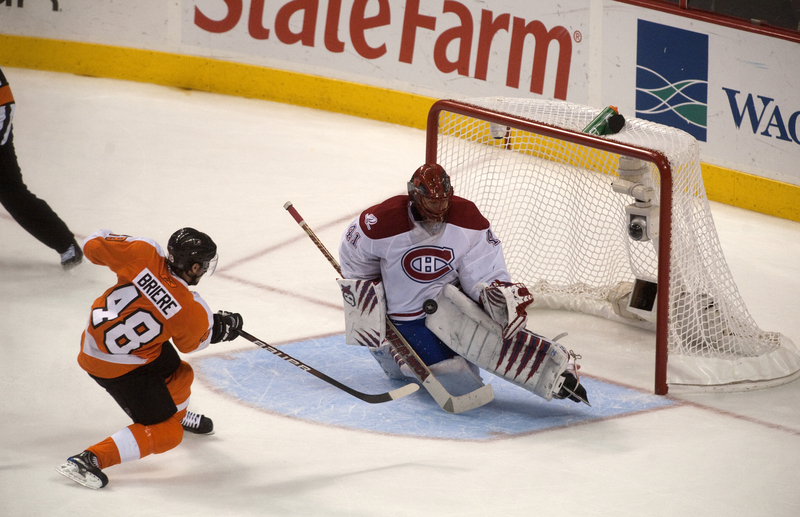Last updated on November 3rd, 2023 at 05:10 pm
In ice hockey games, the plus-minus (+/-) statistic evaluates how many goals vs. how many goals are given up by a player when playing on the ice. While there is some controversy on the importance of the statistic, it is still good for fans to understand why teams track this stat line. Here is the entire breakdown of what +/- means, how to calculate it, why it is essential, and more!
A player’s plus-minus rating is calculated by evaluating what scoring happens while a player is on the ice. If a player is on the ice and their team scores during even-strength or shorthanded, they will get a single point added to their plus/minus score. If the player is on the ice and the other team scores an even-strength or shorthanded goal, they will get the point subtracted from their plus-minus score.
How Important is Plus-Minus in Hockey?
Plus-minus is a relatively important statistic in ice hockey because it helps judge how defensively responsible players are on a given team. Players who are not good at protecting their net or producing scoring chances will naturally have poor plus-minus values. However, this is only one stat, which can be distorted based on the specific situations that a player experiences during a hockey game.
What are Hockey Scenarios to Keep in Mind for this Stat?
Plus-minus only applies to goals scored at even strength or short-handed. If a team scores on a power-play goal, the hockey players on the ice will not get the point added to or subtracted from their plus-minus total. Similarly, shootout goals and penalty shots do not contribute to a player’s plus-minus.
Empty net goals do count towards a team’s plus-minus rating. That means that pulling the goalie can ultimately hurt the plus-minus stat of the players on the ice. Pulling a goalie from the net is an example of where fans might argue that the stat is flawed. Since removing the goalie increases your chances of scoring, it also dramatically increases your chance of giving up a goal to no fault of the players on the ice.
What are Examples Where the Stat Falls Flat?
For example, players who frequently serve on the penalty kill may have worse plus-minus values than players that operate on the power play. While power-play goals do not count towards plus-minus, if a penalty kill unit gets stuck on the ice after the penalty or has a late line change, the skaters may be tired and more prone to allowing goals. Those late-shift, even-strength goals can affect their plus-minus.
Similarly, players deep in the roster, such as those who play on the third and fourth line, may play against the opposing team’s top line. This imbalance in skill level can open them up to more dangerous scoring chances, decreasing their plus and minus ratings.
Do Power Plays Impact a +/- Score?
Powerplays have no impact on a player’s plus and minus score. However, if the other shorthanded team scores a goal, that will count to their plus-minus stat line.
What’s a Good Plus-Minus Value?
Generally, having a positive plus-minus value is the best outcome for most players. That means those skaters have been on the ice for the most amount of goals. A positive plus-minus value also means that players aren’t a defensive liability and aren’t giving up too many even-strength goals.
Most people will even appreciate neutral plus-minus rankings. If a player has a plus-minus of zero, plus one, or minus one, they may still be looked upon favorably because they protect the score. This neutral line means they can chew up minutes and burn time on the clock, helping a team win or keeping the game close in score.
Comparing a +/- Stat to Other Hockey Stats
By comparing it to other standard statistics, fans can better understand a player’s worth to a team via score and score protection. For example, players with high plus-minus should, theoretically, have high assists. With only six players on the ice during the goal, one of those players is likely to have an assist.
Similarly, shooting percentage and ice time are other metrics that can help someone decide if a player’s plus-minus gives the complete picture of their performance on the ice.
Conclusion: What is a Plus-Minus in Hockey
In summary, hockey experts use a plus-minus stat to judge how offensively/defensively responsible a player is when they’re on the ice. Players should have as high of a plus-minus as possible because that means they’re on the ice during many goals. However, many factors can distort this statistic, so it’s essential to use additional stat metrics when measuring a player’s impact on a team.
Similar Posts
How Long is a Hockey Intermission?
Why is There Fighting in Hockey?
What Does Icing Mean in Hockey?
What is a Power Play in Hockey?
Greg Kristan, owner of The Stadium Reviews, LLC and TM Blast, LLC, brings his extensive experience visiting over half of the MLB ballparks, along with numerous MLS, NHL, NBA, and NFL venues, to provide in-depth coverage on the bag policy, food options, and parking. He has also been interviewed about his experiences on several sports podcasts.






